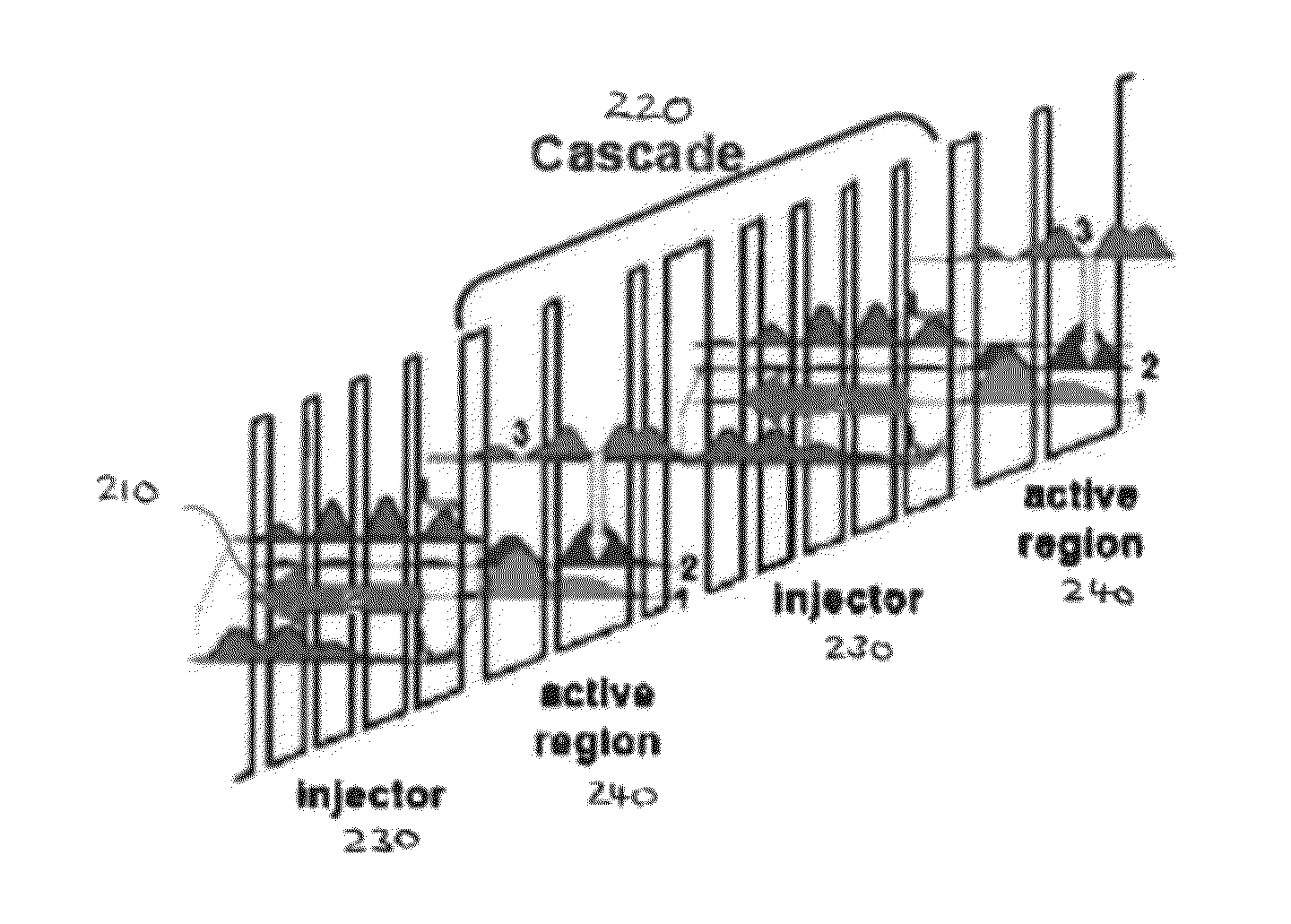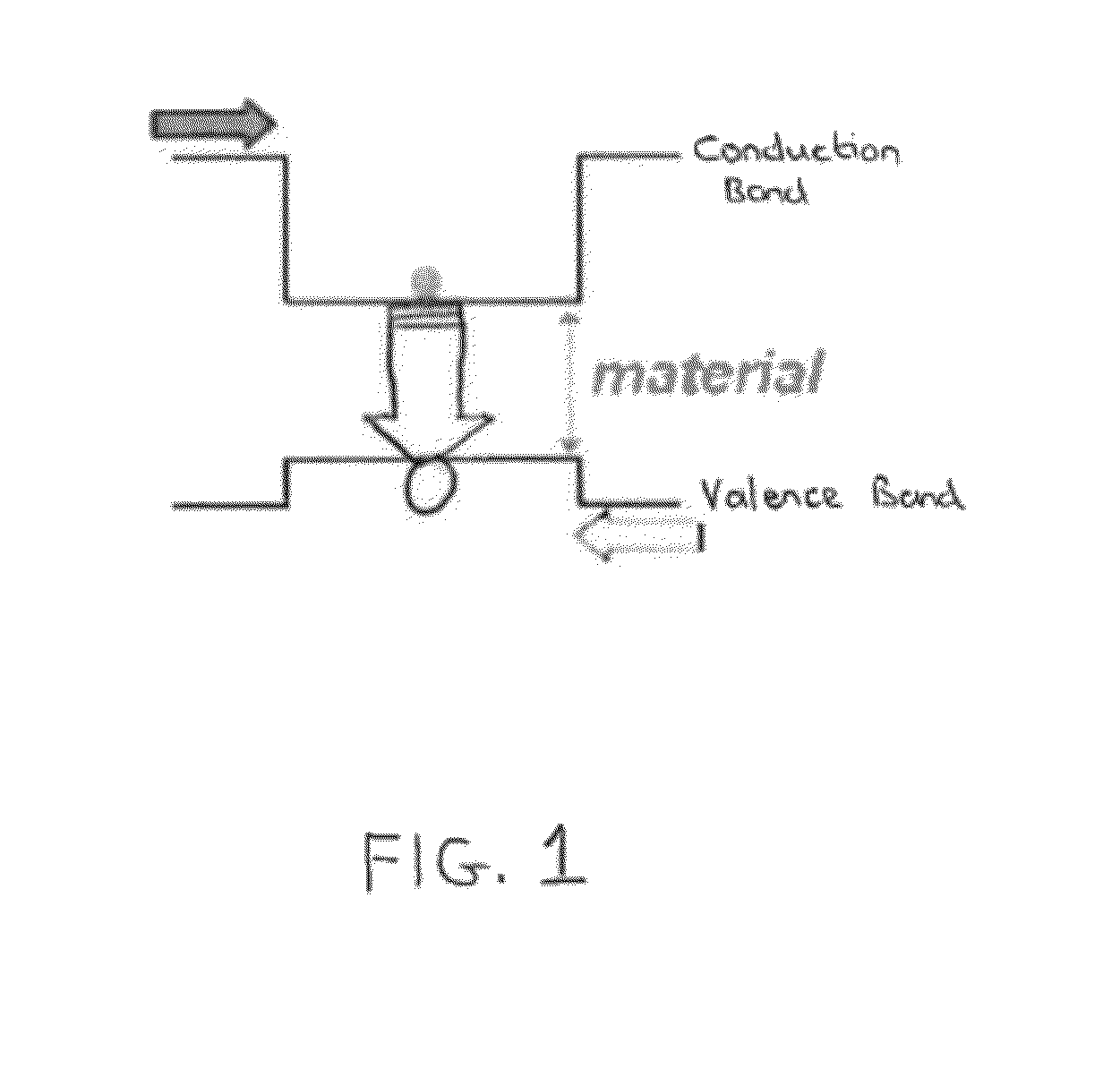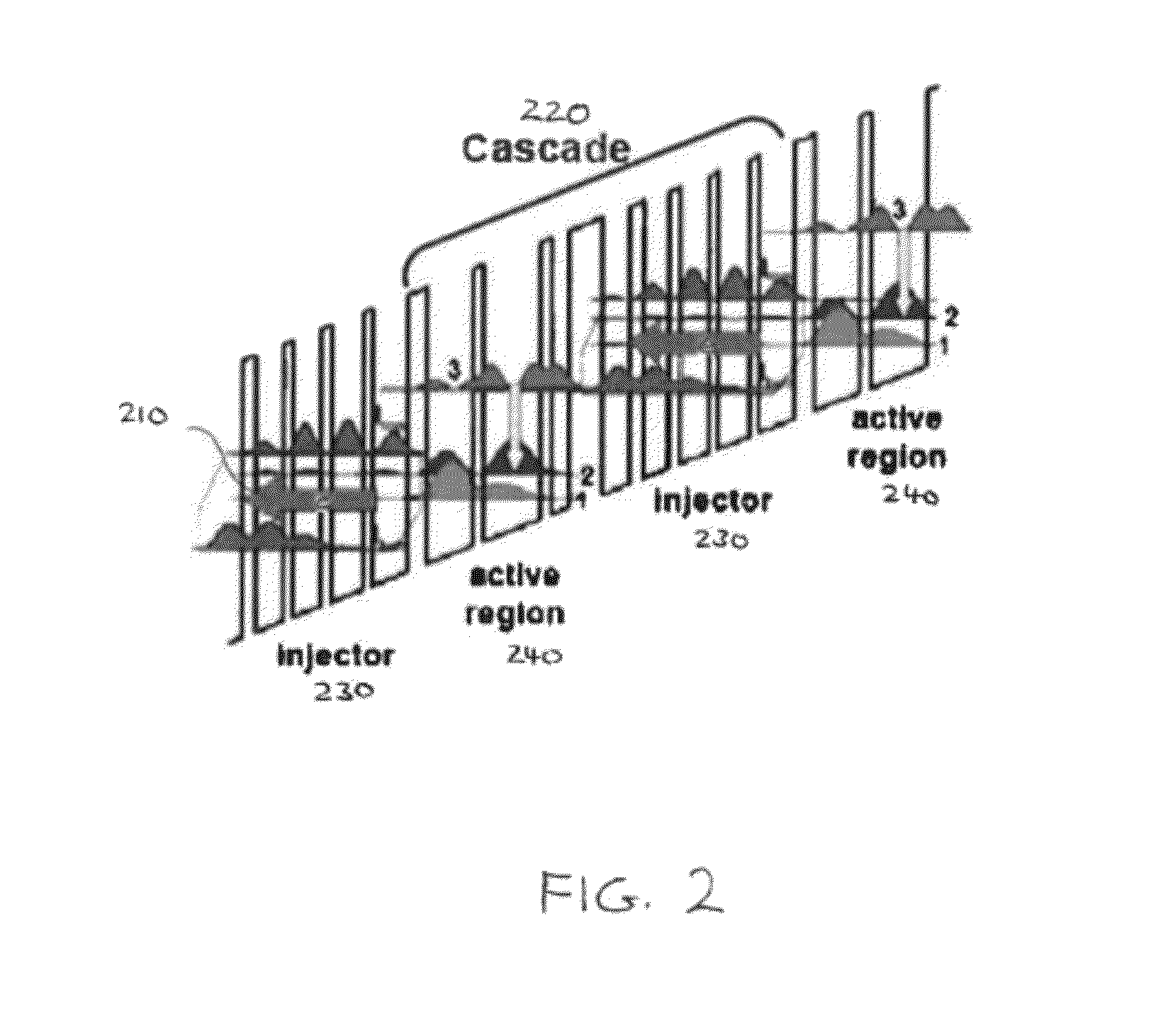Wavelength beam combining of quantum cascade laser arrays
a quantum cascade laser and array technology, applied in the field of semiconductor lasers, can solve the problems of compact dfb qcls, cumbersome and complex construction, compact wavelength tuning, etc., and achieve the effect of improving overlap in the far field
- Summary
- Abstract
- Description
- Claims
- Application Information
AI Technical Summary
Benefits of technology
Problems solved by technology
Method used
Image
Examples
Embodiment Construction
[0042]Arrays of distributed feedback (DFB) quantum cascade lasers (QCLs) can be implemented as single-mode laser sources covering a wide range of mid-infrared frequencies. For various applications in which such QCL arrays be used it may be desirable to have the beams from the individual lasers in the array co-propagate so that the beams overlap in the far-field. For example, for remote-sensing applications, if the beams can be collimated and propagated a long distance where they all overlap, then a single detector may be used at the end of the beam path to measure the resulting signal. However, when using a lens having a focal length f to collimate the emissions from the lasers in the array, each laser will point at a different angle given by:
Δθ=tan-1(Δxf)(1)
In equation (1), Δθ is measured with respect to the axis of the lens and Δx is the transverse position of each laser in the array relative to the focal point of the lens. In this case, the laser beams will be spatially separated...
PUM
 Login to View More
Login to View More Abstract
Description
Claims
Application Information
 Login to View More
Login to View More - R&D
- Intellectual Property
- Life Sciences
- Materials
- Tech Scout
- Unparalleled Data Quality
- Higher Quality Content
- 60% Fewer Hallucinations
Browse by: Latest US Patents, China's latest patents, Technical Efficacy Thesaurus, Application Domain, Technology Topic, Popular Technical Reports.
© 2025 PatSnap. All rights reserved.Legal|Privacy policy|Modern Slavery Act Transparency Statement|Sitemap|About US| Contact US: help@patsnap.com



